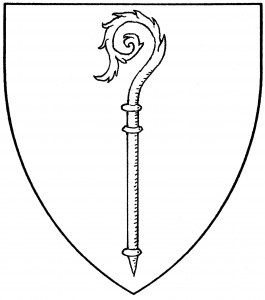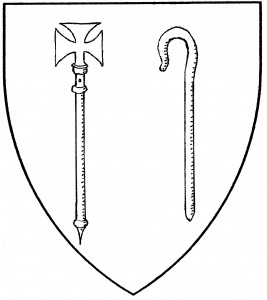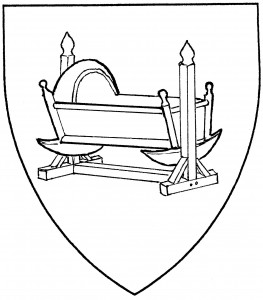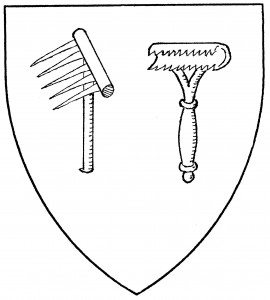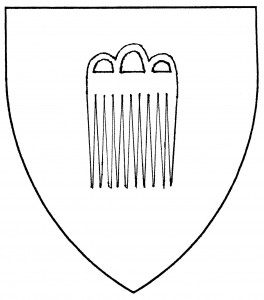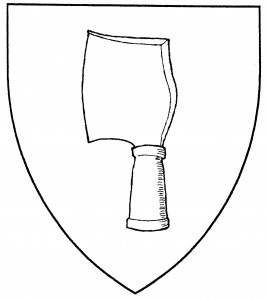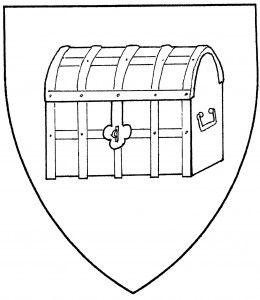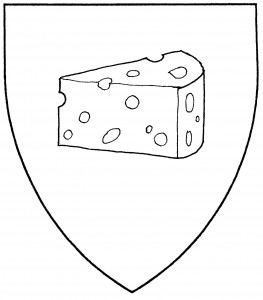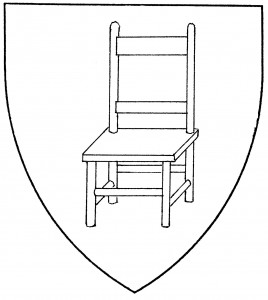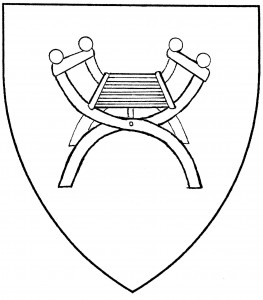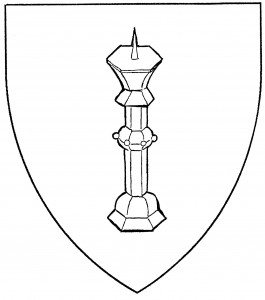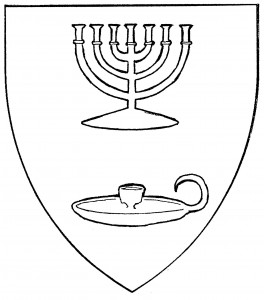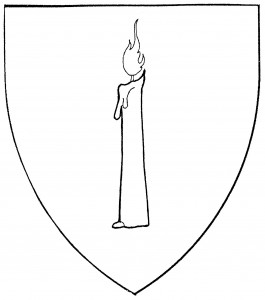A crozier, or crosier, is a bishop’s staff, a highly ornamented depiction of a shepherd’s crook. It’s a period charge, frequently found in the arms of bishoprics, but not exclusively: e.g., the arms of di Spiciani, mid-15th C. [Triv 338]. The crozier is palewise by default, with its opening to dexter.
Similar to the crozier is the “archepiscopal staff”, with a cross formy at the end, found in the arms of the Archbishop of Canterbury in 1514 [HCE xxx]. Finally, there’s the “crook” or “shepherd’s crook”, the simple herder’s staff on which the crozier was based, found in the canting arms of Crook, c.1285 [ANA2 308].
For related charges, see crook of Basel.
Nicholas Abbas de l’Eau Vivante bears: Argent, a crozier azure and a ford proper.
Thora Olafsdottir bears: Quarterly azure and vert, in saltire two shepherd’s crooks Or.
Wolfram von Nürnberg bears: Or, a wolf rampant azure maintaining an archepiscopal staff sable within an orle of wolf’s pawprints azure.
